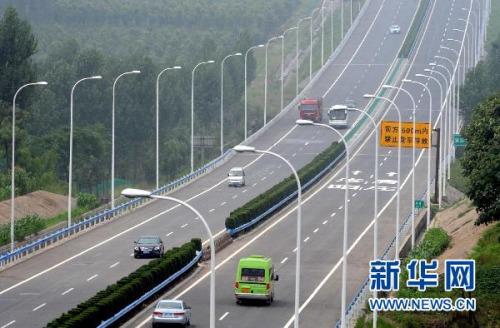

China achieved remarkable progress in transportation over the past year.

(Photo/Xinhua)
Major infrastructure projects, such as Beijing Daxing International Airport and Beijing-Zhangjiakou high-speed railway have been put into service. All administrative villages in the country are now covered with direct postal services, and almost all expressway toll booths at provincial borders have been removed.
During the past year, the country’s transportation sector has carried out several major livelihood projects and important missions, achieving obvious results in serving major national strategies.
The passenger capacity handled by roads and waterway this year is expected to reach 13 billion and 270 million, respectively. In addition, the country’s public transportation system and railway transportation system are expected to have seen over 90 billion and 3.7 billion people trips made throughout the year.
Transportation also played a vital role in the country’s efforts to eliminate poverty. A total of 290,000 kilometers of roads were paved this year in rural areas, and over 9,400 more administrative villages have been connected to bus services, including 5,800 impoverished ones.
In 2019, China’s transportation sector handled 49.1 billion tons of commercial freight and 13.3 billion passenger trips. 275 cities above prefecture level have achieved mutual recognition of public transport cards.
By Dec. 23, a total of 197 million Chinese people registered for electronic toll collection (ETC), an increase of 157 percent.
This year, China invested 3.2 trillion yuan of fixed assets in the transportation sector, stretching its road system to cover 330,000 more kilometers. In addition, it has newly added and improved 382 kilometers of high-level waterways and 8,000 kilometers of railway. Five airports were certified for civilian use this year.
2019 also witnessed enhanced opening-up in the transportation sector. Over 18,000 more trains joined the China-Europe freight service this year, connecting 110 cities on the Eurasian continent. On top of that, 409 new air routes have been launched between China and Belt and Road countries.
 Fire brigade in Shanghai holds group wedding
Fire brigade in Shanghai holds group wedding Tourists enjoy ice sculptures in Datan Town, north China
Tourists enjoy ice sculptures in Datan Town, north China Sunset scenery of Dayan Pagoda in Xi'an
Sunset scenery of Dayan Pagoda in Xi'an Tourists have fun at scenic spot in Nanlong Town, NW China
Tourists have fun at scenic spot in Nanlong Town, NW China Harbin attracts tourists by making best use of ice in winter
Harbin attracts tourists by making best use of ice in winter In pics: FIS Alpine Ski Women's World Cup Slalom
In pics: FIS Alpine Ski Women's World Cup Slalom Black-necked cranes rest at reservoir in Lhunzhub County, Lhasa
Black-necked cranes rest at reservoir in Lhunzhub County, Lhasa China's FAST telescope will be available to foreign scientists in April
China's FAST telescope will be available to foreign scientists in April "She power" plays indispensable role in poverty alleviation
"She power" plays indispensable role in poverty alleviation Top 10 world news events of People's Daily in 2020
Top 10 world news events of People's Daily in 2020 Top 10 China news events of People's Daily in 2020
Top 10 China news events of People's Daily in 2020 Top 10 media buzzwords of 2020
Top 10 media buzzwords of 2020 Year-ender:10 major tourism stories of 2020
Year-ender:10 major tourism stories of 2020 No interference in Venezuelan issues
No interference in Venezuelan issues
 Biz prepares for trade spat
Biz prepares for trade spat
 Broadcasting Continent
Broadcasting Continent Australia wins Chinese CEOs as US loses
Australia wins Chinese CEOs as US loses